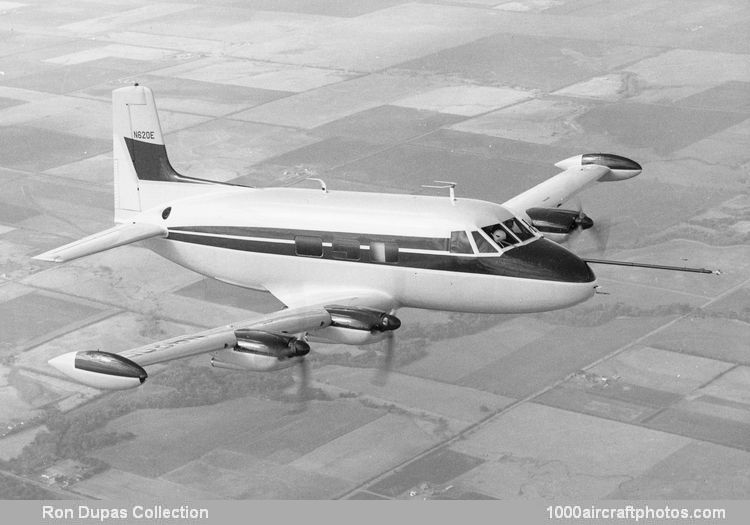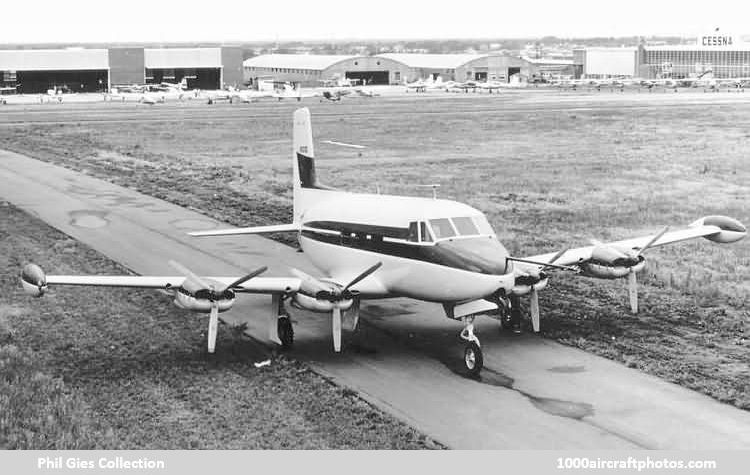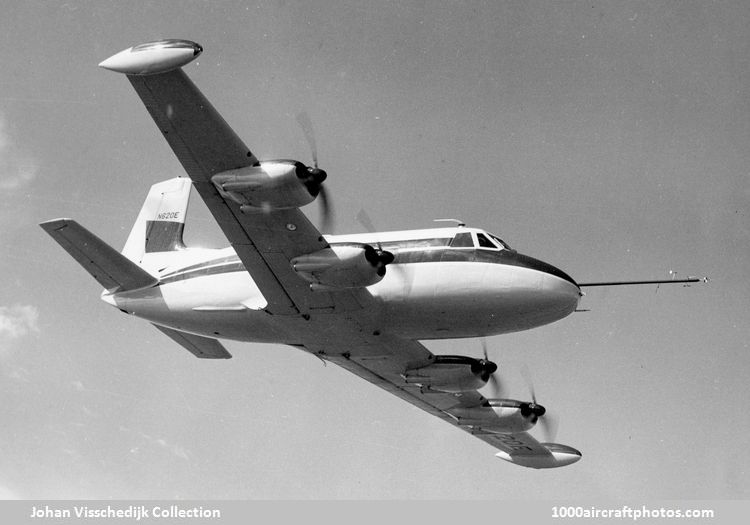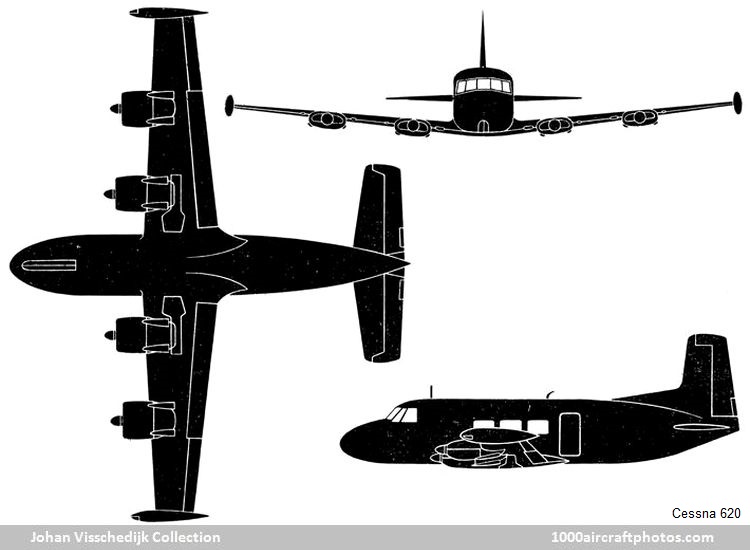The following is from "An Eye To The Sky", a Cessna publication of 1963, covering 50 years of Cessna.
"With the fading era of war surplus airplanes, corporate executives began, in the early 1950s, to look for an airplane to replace the fleet of aging corporate aircraft, many of which were flying with thousands of hours. Market surveys confirmed the need for an aircraft with the following general specifications:
(1) All weather capability; (2) Pressurized and air-conditioned cabin; (3) Multi-engine safety; (4) Reasonable price; and (5) 8 to 10 place.
As Cessna management analyzed the market surveys, the decision was made to investigate the feasibility of such a project. In September 1953, the 620 project was started. Based on Engineering investigations, a four-engine, low wing airplane was agreed on and the design of the Model 620 prototype was begun.
(
Phil Gies Collection)
After almost three years of development, the Model 620 prototype made its initial flight on August 11, 1956. After a very successful one hour and five minute flight, the airplane returned to Cessna where the smiles on the test pilots' faces indicated that the ship was everything Cessna expected.
With the first flight over, the Model 620 project moved into the certification and production preparatory phase. Engineering, tooling, planning, purchasing, and production departments worked hard on the project during the next year to put it into production. But, key Cessna executives anxiously noted that the airlines were placing extensive orders for jet equipment.
This meant but one thing -- the airlines would be offering large numbers of propeller-driven transport aircraft on the used airplane market within the next few years. These aircraft would probably be priced way below normal market values to sell the number of airplanes that would be involved.
This turn of events concerned Cessna. What would happen to the 620 under these conditions? Would corporations buy a new 620, which is smaller and carries less people, instead of a used Convair or Martin? The Model 620 could survive this competition only if it could be marketed near the same price as the surplus airline equipment. Early price estimates of the new ship were not encouraging.
Then it happened! The final cost analysis indicated that the Model 620 would be too expensive to compete with the surplus market. With sad resignation, management cancelled the 620 program in October 1957.
The 620 was a good airplane. It had met every requirement except one -- and that was price. Had the airplane been developed two years before, it might have been ready for the airline equipment competition. But as it turned out, it was killed by an unforeseen turn of events.
The Model 620 was powered with four 350 hp supercharged engines and had a top speed of 282 mph."



